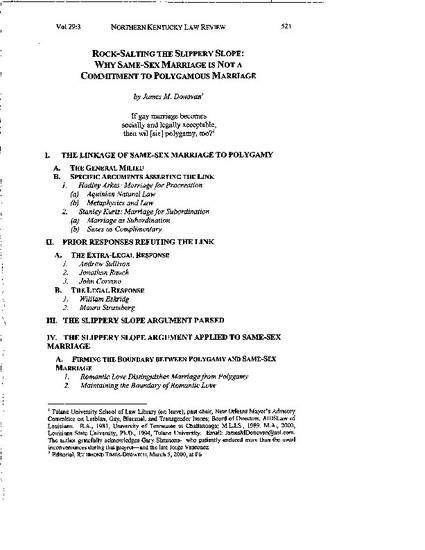
E.J. Graff has documented how any change in the marriage rules inevitably leads to predications of apocalyptic cries warning of "death of marriage and civilization itself." The conservative fit over the possibility of the social acceptance of same-sex marriage therefore has an ancient if repetitive script. Still, the "threat" of same-sex marriage poses for conservatives at least one atypical wrinkle. Unlike discussions of equal or even greater rancor, that raging over same-sex marriage forces its opponents to treat with special delicacy. In the case of abortion, opponents are able to argue in absolute terms: abortion is wrong, period, even if law requires that it be tolerated in some specific circumstances such as rape, incest, or health of the mother. Same-sex marriage, however, requires its opponents to target their arguments toward the "same-sex" qualifier without in any impugning "marriage" itself. They must assume the difficult position of arguing simultaneously that marriage is an incomparable social good that must also be utterly denied to an entire class of persons due to their constitutional natures. Such targeting -- if it can be conscientiously accomplished at all -- necessitates more sophisticated argumentation than that deployed in abortion arguments.
One such special tactic is the slippery slope argument. In its crudest form, the argument opposes same-sex marriage on the ground that if that is allowed, then how could be not also allow other forms of deviant sexual practices. The trinity of deviant forms invariably conjured includes polygamy, incest, and bestiality. This Article concentrates on the first, polygamy.
Available at: http://works.bepress.com/james_donovan/30/
